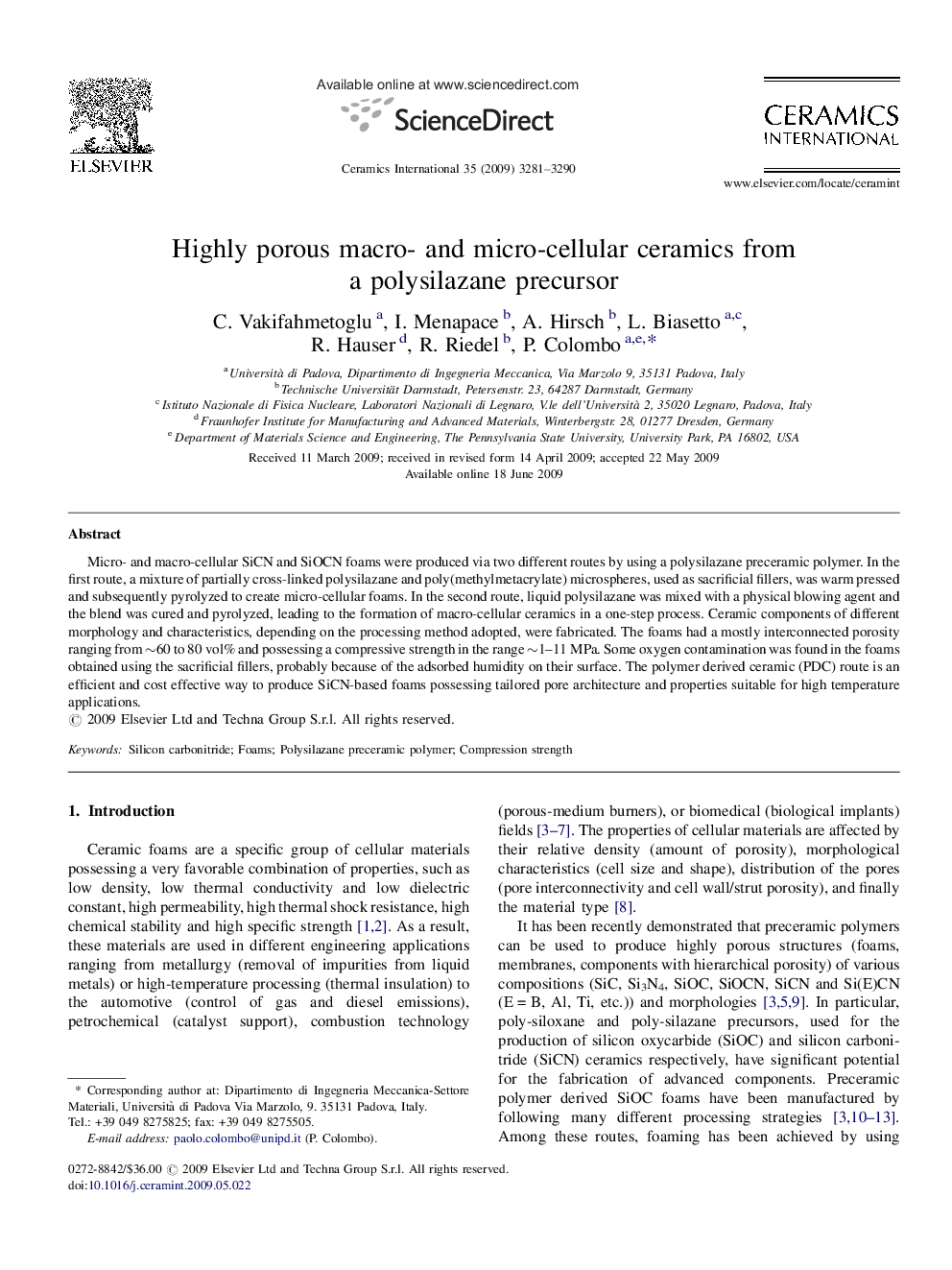| Article ID | Journal | Published Year | Pages | File Type |
|---|---|---|---|---|
| 1463318 | Ceramics International | 2009 | 10 Pages |
Micro- and macro-cellular SiCN and SiOCN foams were produced via two different routes by using a polysilazane preceramic polymer. In the first route, a mixture of partially cross-linked polysilazane and poly(methylmetacrylate) microspheres, used as sacrificial fillers, was warm pressed and subsequently pyrolyzed to create micro-cellular foams. In the second route, liquid polysilazane was mixed with a physical blowing agent and the blend was cured and pyrolyzed, leading to the formation of macro-cellular ceramics in a one-step process. Ceramic components of different morphology and characteristics, depending on the processing method adopted, were fabricated. The foams had a mostly interconnected porosity ranging from ∼60 to 80 vol% and possessing a compressive strength in the range ∼1–11 MPa. Some oxygen contamination was found in the foams obtained using the sacrificial fillers, probably because of the adsorbed humidity on their surface. The polymer derived ceramic (PDC) route is an efficient and cost effective way to produce SiCN-based foams possessing tailored pore architecture and properties suitable for high temperature applications.
